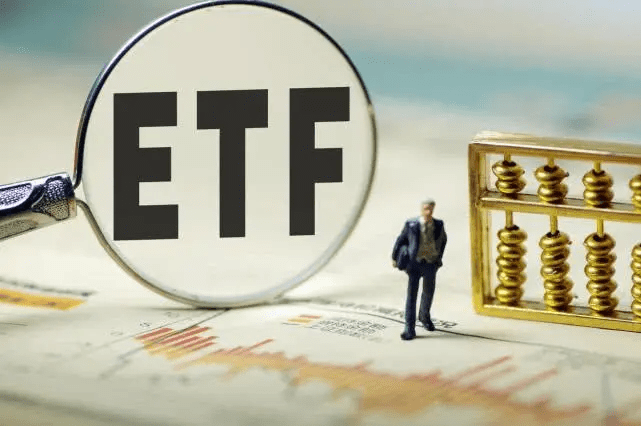Everything You Need to Know About LOF Fund

As a financial management tool, funds are specially provided for those who do not understand stock analysis and have no professional financial knowledge. To put it simply, you invest your money in a fund, and the fund manager will take your money to invest in other markets. The gains you get will belong to you, and you will bear the loss of funds. They are only responsible for investment and only charge handling fees. Of course, the other markets mentioned here include stocks, bonds, bank deposits, etc.
Definition of the LOF Fund and Examples
LOF fund, its full English name is Listed Open-Ended fund, which means that after the issuance of a listed open-end fund, investors can purchase and redeem fund shares at designated outlets, and can also buy and sell the fund on the exchange. In other words, the LOF fund is both a stock market fund and an out-of-stock market fund.
Here, I make a simple example. That is, LOF fund can not only trade in your stock account, but also use off-market software, such as Alipay, fund websites and other platforms for off-market purchases. However, I would like to remind everyone that it is not allowed to buy stock market and sell out-of-stock market. Buying and selling are either all on the stock market, or all can only be out-of-stock market.
Pros and Cons of LOF Funds

Pros
1. LOF funds can be traded on and off the stock market, and investors can take advantage of this feature for arbitrage.
2. Trading methods are more diversified. Compared with ordinary open-end funds, LOF funds can be traded like stocks, and can provide investors with multiple channels to enter or exit the fund.
3. The operation is more flexible and the choice space is larger. Since the LOF fund can be traded like a stock, the fund can be traded more conveniently and flexibly, and investors can buy and sell in the secondary trading market to ensure the liquidity of funds.
4. Accelerate the transaction speed. That is, LOF has increased the stock market trading of open-end funds. The purchased fund shares can be sold on T+1 day. If the funds sold are based on the settlement method of securities transactions, which can be used on the same day, and cash can be withdrawn on T+1 day. Compared with out-of-stock market transactions, buying is one day earlier than subscription, and selling is at most six days earlier than redemption.
5. Reduce transaction fees. This means that investors can reduce transaction costs by trading funds in the secondary market. Generally speaking, the bilateral fees for exchange-traded fund units are up to 0.5%.
Cons
1. There are fewer varieties. Compared with ordinary funds, there are fewer types of funds, and they cannot fully meet the investment needs of investors who invest in portfolios.
2. The investment threshold of LOF fund is high. Automatic Investment Plan is the main investment method in the investment market now, but LOF funds must be actively operated during the transaction period, and there is a limit on the amount of a single transaction, too little will increase transaction costs, and the expected return is very small. More importantly, the investment needs of LOF funds is higher than other funds.
Difference between LOF Fund and ETF Fund

For most people who like to buy funds, it is particularly easy to confuse LOF funds and ETF funds, and even define them as the same fund. In fact, there is a big difference between the two, and I will explain the difference from seven aspects below.
1. Subscription and redemption mechanisms are different.
The redemption of ETF funds is an exchange between stocks and fund shares, while the subscription and redemption of LOF is an exchange between funds and cash.
2. Subscription and redemption efficiencies are different.
Species such as stock ETF and bond ETF are confirmed instantly. Therefore, the shares purchased on the same day can be immediately entered into a disguised T+0 transaction in the secondary market. While QIDD-ETF and gold ETFs are cash substitutes that are confirmed on the day of subscription and can be redeemed on the next trading day. However, LOF subscriptions are all confirmed by T+1, only T+2 can be sold for redemption. In terms of transaction speed, it is obviously not fast enough for ETF.
3. There are differences between fund’s subscription and redemption shares.
ETFs have a minimum share requirement for subscription and redemption. Take ETF Link C as an example. Generally, it is at least 300,000 shares, and some start with 1 million shares, which is a higher starting point. The LOF fund starts with 1,000 fund units.
4. Different user base between the two
Investors participating in LOF funds are mainly retail investors, while investors who subscribe and redeem ETFs are mainly professional institutions.
5. Equity quote frequency is different
ETF provides a reference net value quotation of the fund every 15 seconds, commonly known as the ETF reference unit fund net value IOPV. However, LOF only provides one or several times a day for fund reference net worth quotations, so it is difficult for LOF to arbitrage on the stock market or out-of-stock market.
6. The announcement frequency of subscription and redemption is different
ETF discloses the subscription and redemption situation daily, while LOF discloses quarterly.
7. The investment strategies adopted by the two are different
LOF is an ordinary open-end fund that adds an exchange trading method, which can be an index fund or an active fund. The ETF fund adopts a passive management method, which strictly replicates a certain type of index to operate.
On the whole, the operation methods of LOF funds and ETF funds are relatively different. At present, ETF funds have relative advantages, while LOF funds no longer have absolute advantages in all aspects.
Tips:
Financial management has the risk, the investment should be cautious!



